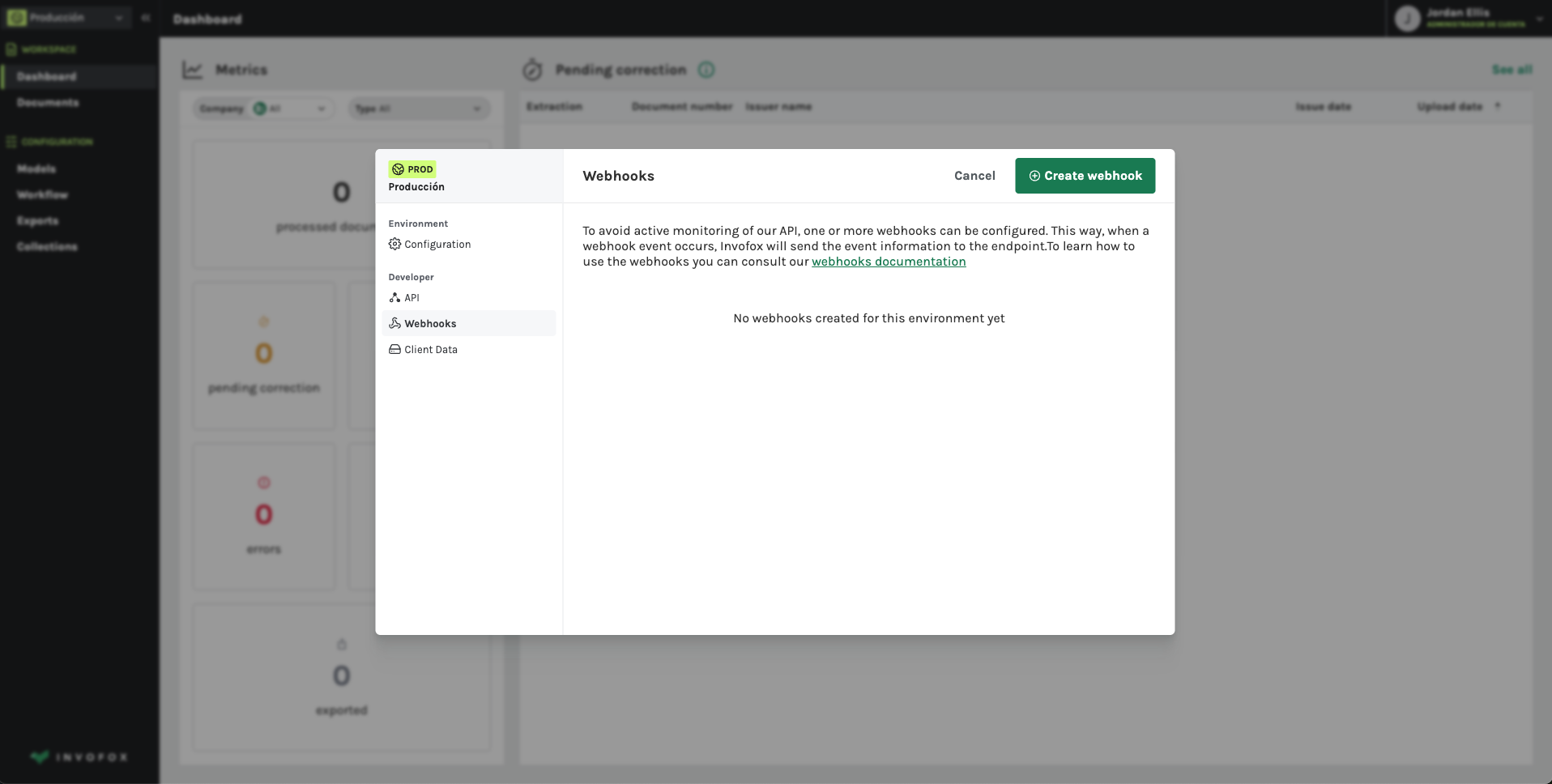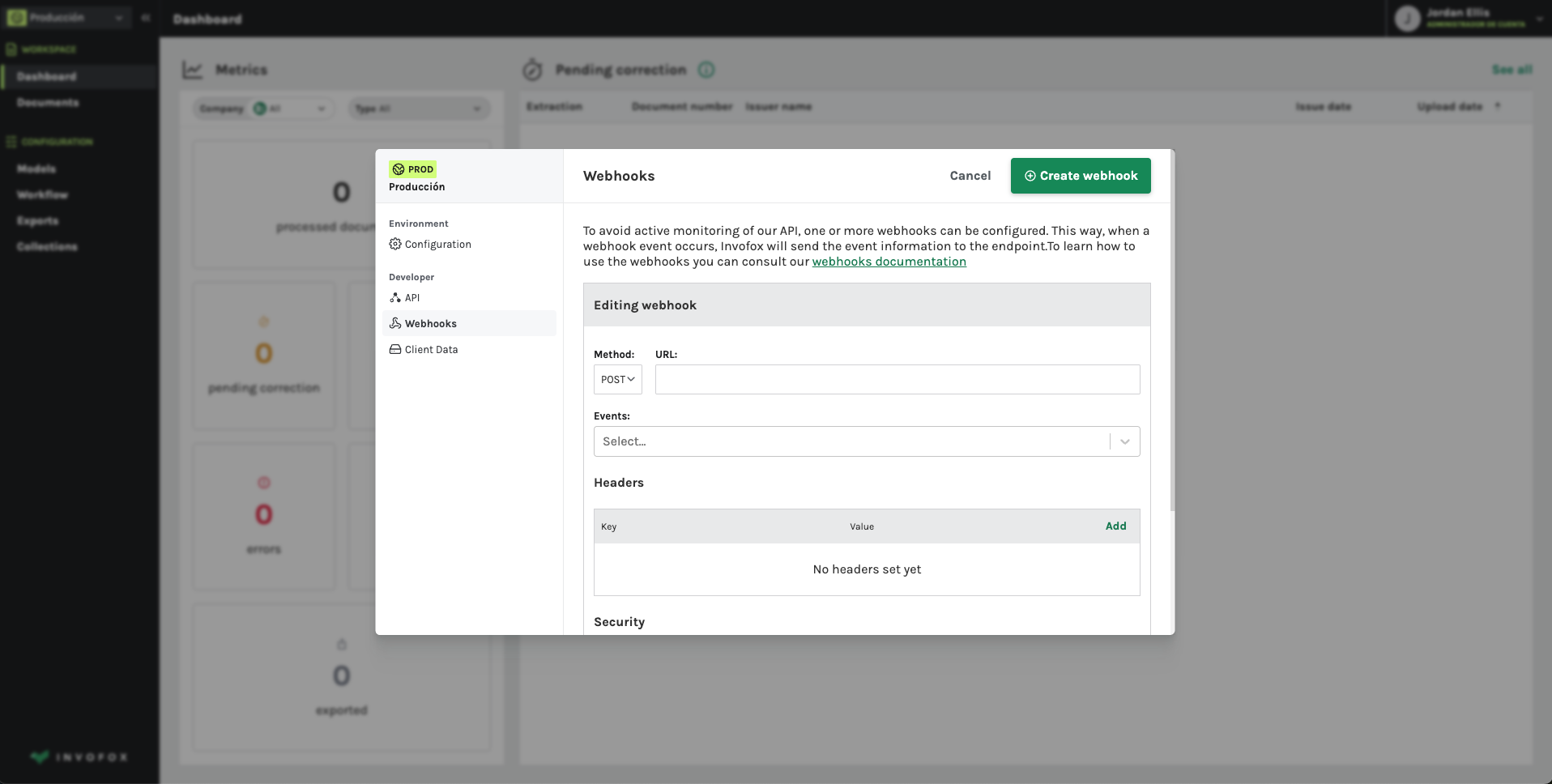Integrate Webhooks
This page will help you setup your webhooks for asynchronous communication with Invofox
Extracting, completing and validating all the information from a document can take a few seconds. For that reason, we always recommend our customers to use our webhook system and leverage an asynchronous communication with Invofox.
🔧Setup your webhooks
To set up your first Webhook, go to the environment's configuration. To access this section, click the environment selector. Then, on the right-hand side of the selected environment's information, click the ⚙️ gear icon to open the Configuration window and select the Webhooks section.


To create a new webhook click on the Create webhook button. This will open up the configuration for the created webhook.

To enable webhooks you will need to configure:
- The HTTP method you want to be called with. You can choose between POST and PUT.
- The URL where you will be listening for the events. If you want to use different URLs for different events you can do so by creating different webhook configurations within the same environment.
- The events you want to listen to. Check out our API reference for the list of all available events.
- The custom headers you want to receive in the request. We will append this headers to the request, and it's only for your use, Invofox will never use these headers for anything else.
- The hashing algorithm with which you want to sign the request.
- The secret you want to use with the hashing algorithm. With the hashing algorithm and the secret (which nobody should know!) you will be able to ascertain the request came from Invofox and protect yourself from DDOS and other cybersecurity threats. You will get the hash in the custom header
x-invofox-signature.
Webhook payload
Whenever you receive a webhook, you will get a JSON with the following structure:
- The key type will inform you what kind of event you are receiving. For a full list of supported events, check out our API reference
- The key data will contain the associated object's (document or batch) information.
- The key time, which we use to prevent potential capture and replication threats.
Error and retrial policy
By default, Invofox will make up to two retries if an HTTP response code other than 200 is received.
To avoid timeouts, it is recommended to respond with an HTTP 200 code immediately upon receiving the request, without initiating any synchronous tasks.
Updated 3 months ago
